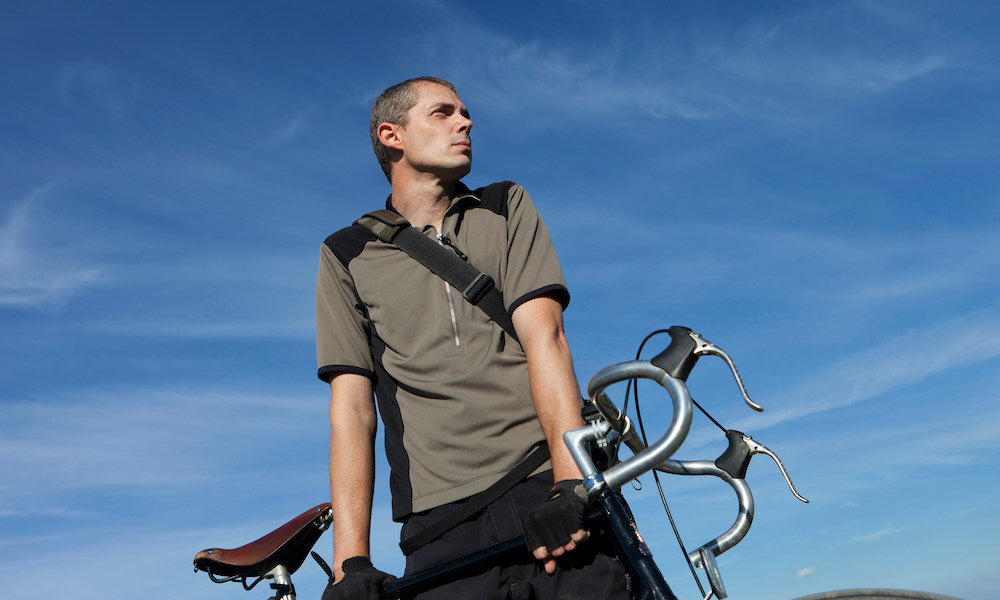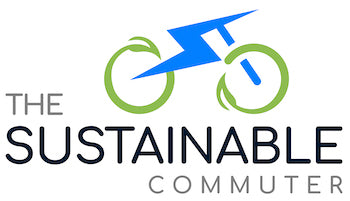
Exploring the Benefits of Commuting by Bike: Physical Health, Environmental Impact, and Cost Savings
Share
As cities around the world become increasingly congested with traffic, more and more people are turning to alternative modes of transportation, including biking. Biking is a sustainable, affordable, and enjoyable way to get around, and it offers a range of physical, environmental, and financial benefits. In this blog post, we'll explore the benefits of commuting by bike in more detail and provide some tips on how to get started.
Physical Health Benefits of Commuting by Bike
One of the primary benefits of commuting by bike is the physical health benefits it provides. Biking is a great form of exercise that can help improve cardiovascular health, strengthen muscles, and reduce the risk of chronic diseases. Here are some of the specific health benefits of biking:
Increased physical activity
Biking is a form of moderate to vigorous physical activity, which means it can help you meet the recommended guidelines for physical activity set by health organizations. In fact, biking for just 30 minutes a day can help improve overall fitness levels and reduce the risk of chronic diseases such as heart disease, diabetes, and obesity.
Improved cardiovascular health
Biking is a great form of aerobic exercise, which can help improve cardiovascular health by strengthening the heart and lungs. Regular biking can help lower blood pressure, reduce the risk of heart disease, and improve overall circulation.
Reduced stress levels
Biking is also a great way to reduce stress levels. Studies have shown that cycling can lower levels of the stress hormone cortisol and increase the release of endorphins, which can help improve mood and reduce anxiety.
Improved sleep quality
Regular exercise, such as cycling, can also help improve sleep quality and duration. This can lead to improved energy levels and overall well-being.
Reduced risk of chronic diseases
Finally, biking can help reduce the risk of chronic diseases such as heart disease, diabetes, and obesity. This is because it is a form of physical activity that can help improve overall fitness levels and reduce the risk factors for these diseases.
Environmental Impact of Commuting by Bike
Another key benefit of commuting by bike is its positive impact on the environment. Biking is a sustainable mode of transportation that produces zero emissions, which can help reduce air pollution, greenhouse gas emissions, and traffic congestion. Here are some of the specific environmental benefits of biking:
Reduced carbon emissions
Biking is a zero-emission form of transportation, which means it does not produce any carbon emissions. By biking instead of driving, you can help reduce the amount of carbon emissions released into the atmosphere, which can help mitigate the effects of climate change.
Reduced air pollution
Biking can also help reduce air pollution, which can negatively impact human health. Air pollution can cause respiratory problems, heart disease, and other health issues. By biking instead of driving, you can help reduce the amount of air pollution in your local area.
Reduced traffic congestion
Biking can also help reduce traffic congestion, which can have economic and environmental impacts. Traffic congestion can cause delays, increase fuel consumption, and produce more emissions. By biking instead of driving, you can help reduce the number of cars on the road, which can help reduce traffic congestion.
Cost Savings of Commuting by Bike
In addition to the physical and environmental benefits, biking can also help save you money. Biking is a low-cost form of transportation that can help reduce fuel, maintenance, and parking expenses. Here are some of the specific cost-savings benefits of biking:
Reduced fuel costs
Biking is a zero-cost form of transportation, which means it does not require any fuel. This can help save you money on fuel costs, which can add up quickly, especially if you have a long commute.
Reduced vehicle maintenance costs
Biking can also help reduce vehicle maintenance costs. Regular driving can cause wear and tear on your vehicle, resulting in higher maintenance costs over time. By biking instead of driving, you can reduce these costs, as your vehicle has less wear and tear.
Reduced parking costs
Parking costs can also add up quickly, especially if you work in a busy city. Commuting by bike eliminates this cost, as bikes can be parked for free or for a minimal fee in many locations.
Reduced insurance costs
Car insurance can be expensive, especially if you have a long commute or if you live in an area with high premiums. Commuting by bike can reduce these costs, as you may be able to reduce your car insurance coverage or eliminate it altogether.
Improved health, leading to lower healthcare costs: Regular exercise, such as cycling, can help improve your health and reduce your risk of chronic diseases, which can lead to lower healthcare costs over time. This can also help reduce absenteeism from work due to illness, which can impact productivity.
Additional Benefits of Commuting by Bike
In addition to the physical, environmental, and cost savings benefits, biking also provides a range of additional benefits. Here are some of them:
Increased independence
Biking provides a sense of independence and freedom that can be empowering. It allows you to move around at your own pace and schedule without relying on public transport or traffic.
Mental stimulation
Biking can also provide mental stimulation and a sense of adventure. It allows you to explore new routes, discover new places, and unique experience the outdoors.
Social benefits
Biking can also be a social activity, as you can join cycling groups or clubs and connect with other cyclists. This can help build a sense of community and belonging and improve your social skills and confidence.
Customization
Biking can also be customized to suit your preferences and needs. You can choose your own bike, gear, and accessories and adjust your route and speed to suit your fitness level and time constraints.
Safety
Finally, biking can also be a safe mode of transportation, as long as you take basic safety precautions such as wearing a helmet, obeying traffic laws, and using lights and reflectors when riding in low light conditions.
How to Commute by Bike
Choosing the right bike
Choose a bike that is comfortable, reliable, and suitable for your needs. Consider factors such as your commute distance, terrain, and weather conditions.
Basic safety precautions
Take basic safety precautions such as wearing a helmet, using lights and reflectors, obeying traffic laws, and staying alert and aware of your surroundings.
Planning your route
Plan your route carefully, considering road conditions, traffic volume, and bike lanes or paths.
Storing and securing your bike
Ensure you have a secure place to store your bike at home and work. Use a lock to prevent theft, and consider registering your bike with a local bike registry.
Final Thoughts
Commuting by bike offers a range of physical, environmental, and financial benefits. It's a sustainable, affordable, and enjoyable way to get around, and it provides a range of additional benefits, such as increased independence, mental stimulation, and social connections.
If you're interested in biking as a mode of transportation, start by choosing the right bike, taking basic safety precautions, planning your route, and storing your bike securely. Remember to take it slow initially, gradually increasing your distance and intensity. Biking can be a fun and rewarding way to get around, and it's a great way to stay active and enjoy the outdoors. So why not give it a try? Your body, your wallet, and the environment will thank you.
